East New York Is Not the Next Crown Heights: Residents Fear Rezoning Will Push Them Out
Community Board members and residents seemed unfazed by an aggressive presence by the press Residents and officials packed Community Board 16’s meeting space in Brownsville Monday night, October 19, for the first public hearing on Mayor de Blasio’s controversial East New York rezoning plan. Among the 100 or so community members who turned out were suited representatives from City Planning,…
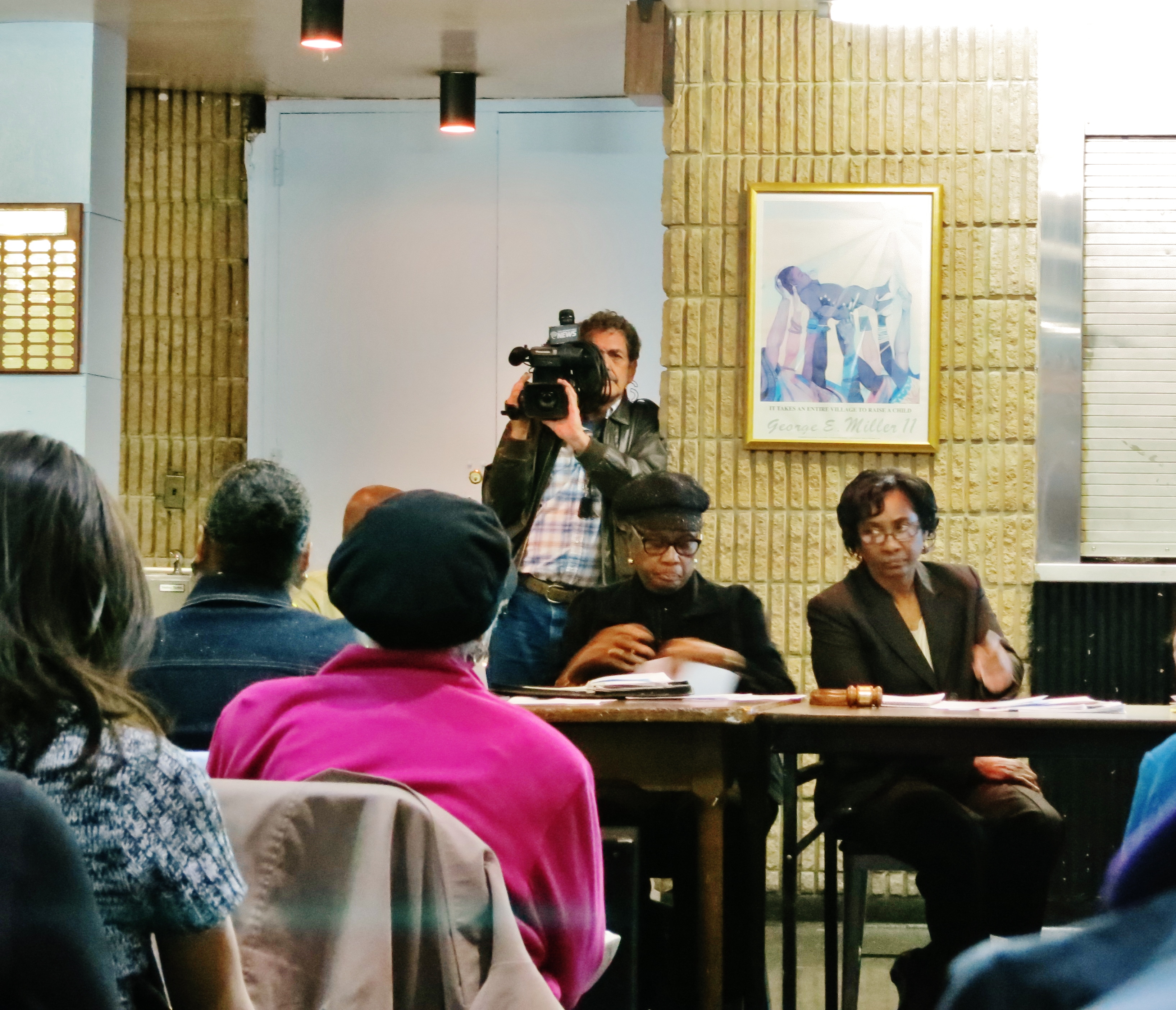 Community Board members and residents seemed unfazed by an aggressive presence by the press
Community Board members and residents seemed unfazed by an aggressive presence by the press
Residents and officials packed Community Board 16’s meeting space in Brownsville Monday night, October 19, for the first public hearing on Mayor de Blasio’s controversial East New York rezoning plan.
Among the 100 or so community members who turned out were suited representatives from City Planning, the HPD, the EDC, the Parks Department and the Small Business Association, many standing together by a side door.
The night began with a lengthy, detail-specific presentation by City Planning that thoroughly outlined the plan’s benefits in number-oriented language. There was a tangible audience disconnect with the proposal, the formal presentation approach focusing on minute details of the complex agenda rather than addressing larger themes.
A key part of Mayor de Blasio’s goal to create more affordable housing in New York, the plan to rezone East New York promises a new local school, improved park maintenance, permanent below-market-rate units and other amenities for the notoriously under-serviced neighborhood.
This would come at the price of allowing private developers to build up the low-lying area, constructing a mix of market-rate and affordable housing that critics and supporters say would attract more affluent people than those currently composing the neighborhood.
While officials not once uttered the word “gentrification” in their explanation of proposal specifics, community members loudly articulated their fears the proposed rezoning would not benefit existing residents.
“Don’t let nobody come here and try to turn this into Bed Stuy or Crown Heights,” State Assemblyman and former Black Panther Charles Barron passionately told the standing-room-only audience to raucous applause and encouragement. “Gentrification is coming — you can’t stop it,” Barron went on. “You should reject this plan…We need a diversity of income? That means more white people.”
Barron encouraged the community not to settle for less than 50 percent mandatory affordable housing, and critiqued City Planning for setting the area median income level too high.
His wife, New York City Council member Inez Barron, spoke later regarding similar issues with the rezoning proposal.
Following the Barrons’ dissertations and City Planning’s presentation was a question-and-answer period that ended up as more of a blame-and-explain session. A public comment session followed.
While the meeting was largely orderly and no one spoke out of turn, during the question and comment sessions, residents shouted indignities regarding everything from broken promises under the Bloomberg administration to frustrations regarding the Barclays Center, and fears of displacement.
Many said they were concerned the rezoning would take place without the city following through on affordability aspects, and that the rezoning would lead to an influx of newcomers who don’t look or talk like the area’s current low-income African-American population, and won’t spend money within the community.
Greenpoint residents and members of Greenpoint’s Friends of Bushwick Inlet Park shared their own community’s losses at the hands of what they felt was a bait-and-switch city rezoning of the Williamsburg and Greenpoint waterfront in 2005. New York has lost its integrity, they said — reject this plan so your children and grandchildren can afford to grow up in your community. This was met with applause.
As the night wore on, the crowd thinned but emotions continued to rage. A sense of impending change has clearly taken root in Brownsville. It speaks loudly of New York’s affordability crisis for a community in such dire need of improved amenities to distrust a proposal offering them such valuable resources.
In Brooklyn, fear of displacement and the breakup of longtime communities and irreplaceable cultural niches at the hands of gentrification outweighs the want for almost anything else.
Last night’s meeting was the first public hearing on the rezoning. Community Board 5, representing East New York and Cypress Hills, will hold a second public hearing at 6:30 p.m. on October 28, at 999 Jamaica Avenue. Borough President Eric Adams will also be holding a public hearing at 6 p.m. on November 23 at Brooklyn Borough Hall.
Community Board 16 will vote on its formal recommendation concerning the proposal in November, officials said.
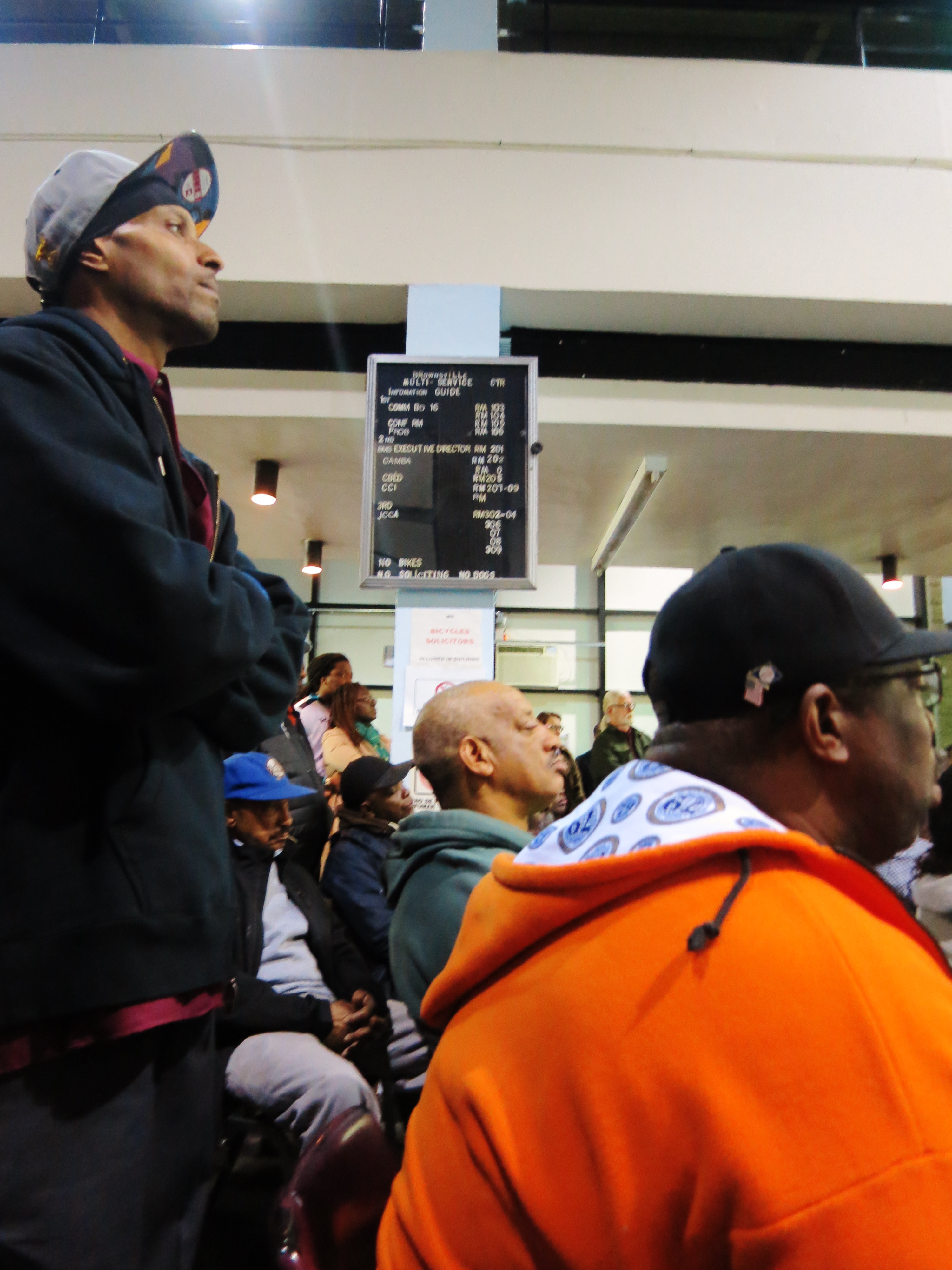 Concerned community members were largely opposed to the rezoning
Concerned community members were largely opposed to the rezoning
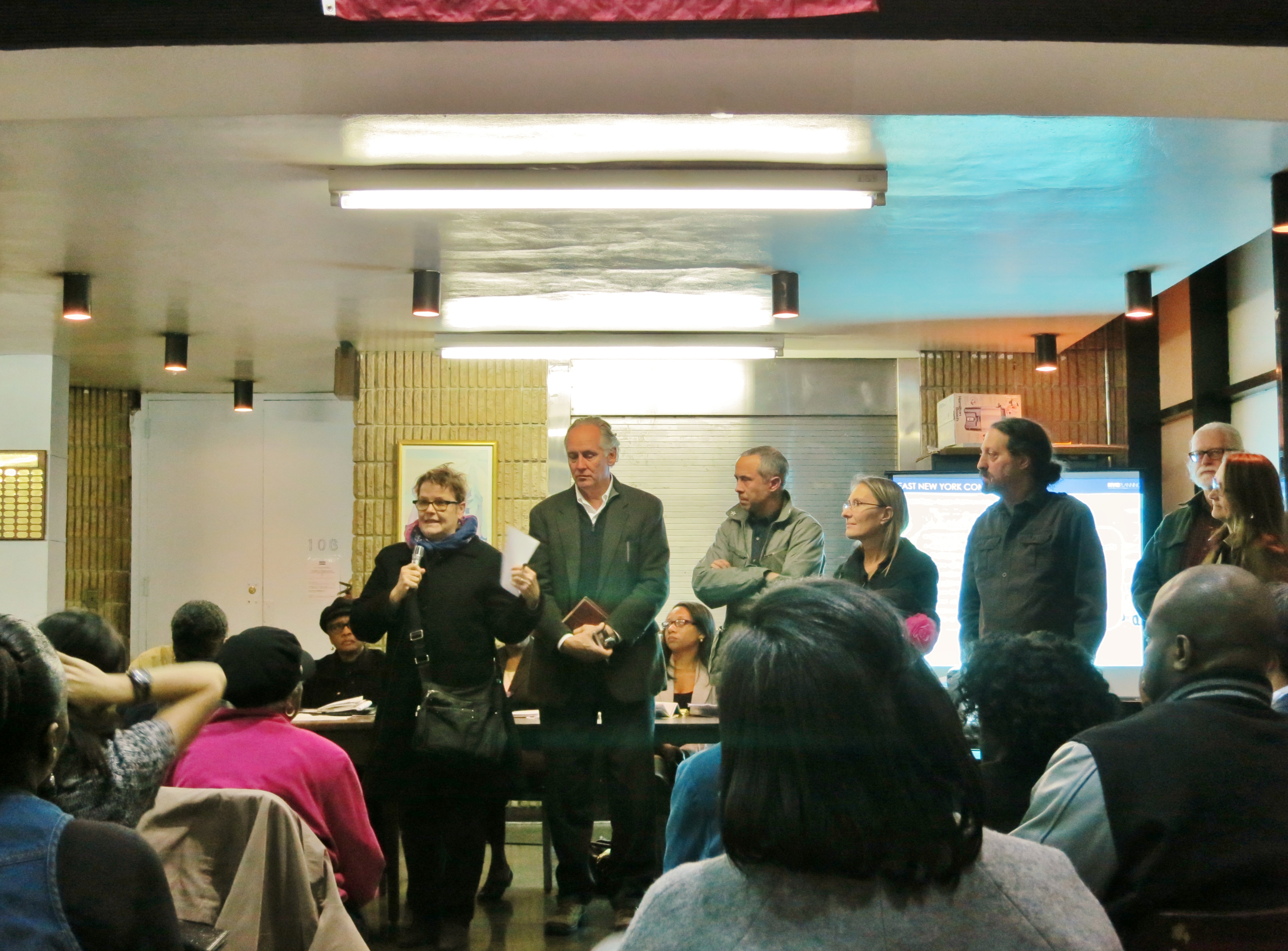 Members of Greenpoint group Friends of Bushwick Inlet Park encouraged Community Board 16 to vote no on the rezoning proposal
Members of Greenpoint group Friends of Bushwick Inlet Park encouraged Community Board 16 to vote no on the rezoning proposal
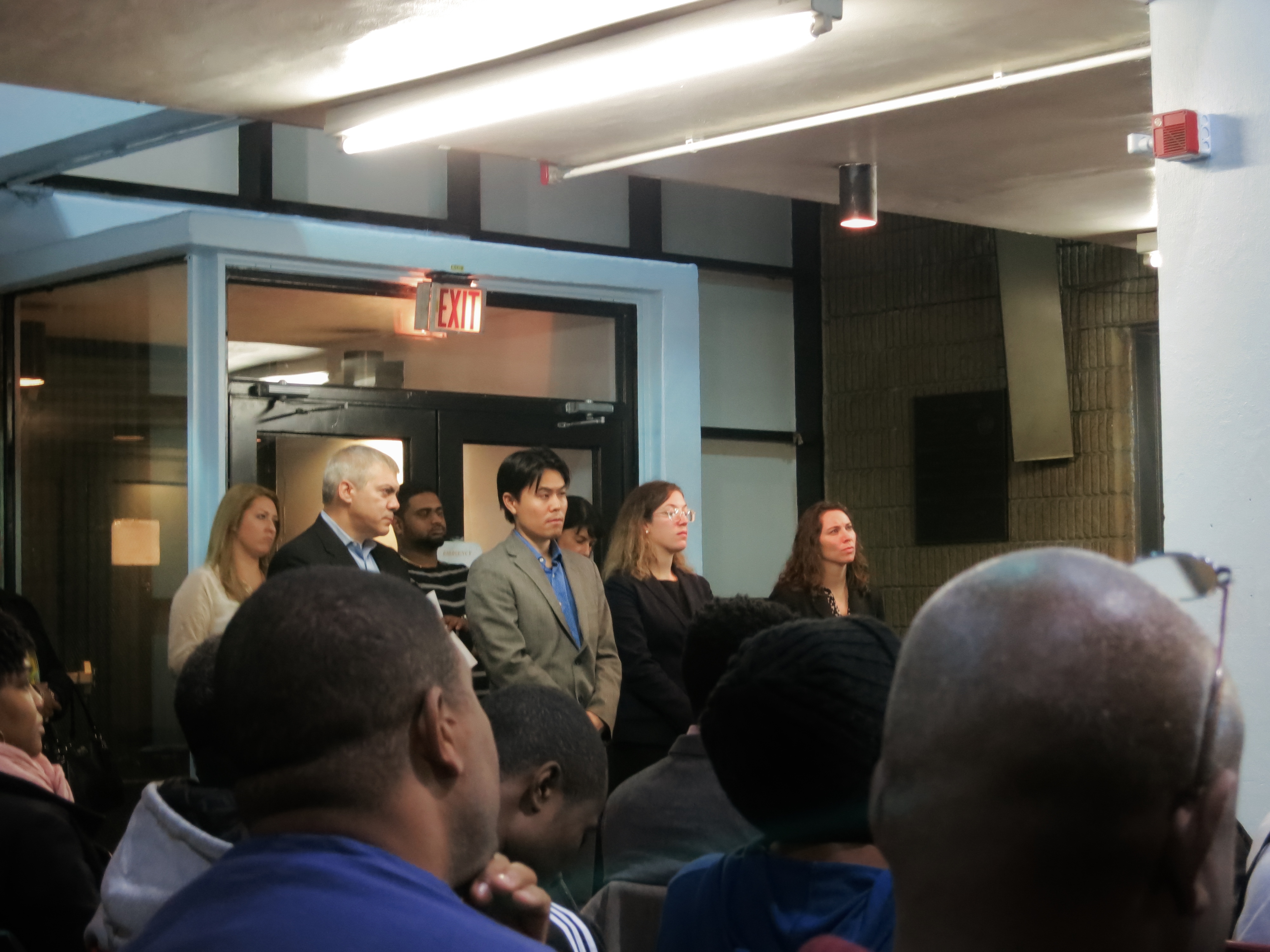 Representatives from City Planning and other agencies faced much critique regarding the rezoning plan
Representatives from City Planning and other agencies faced much critique regarding the rezoning plan
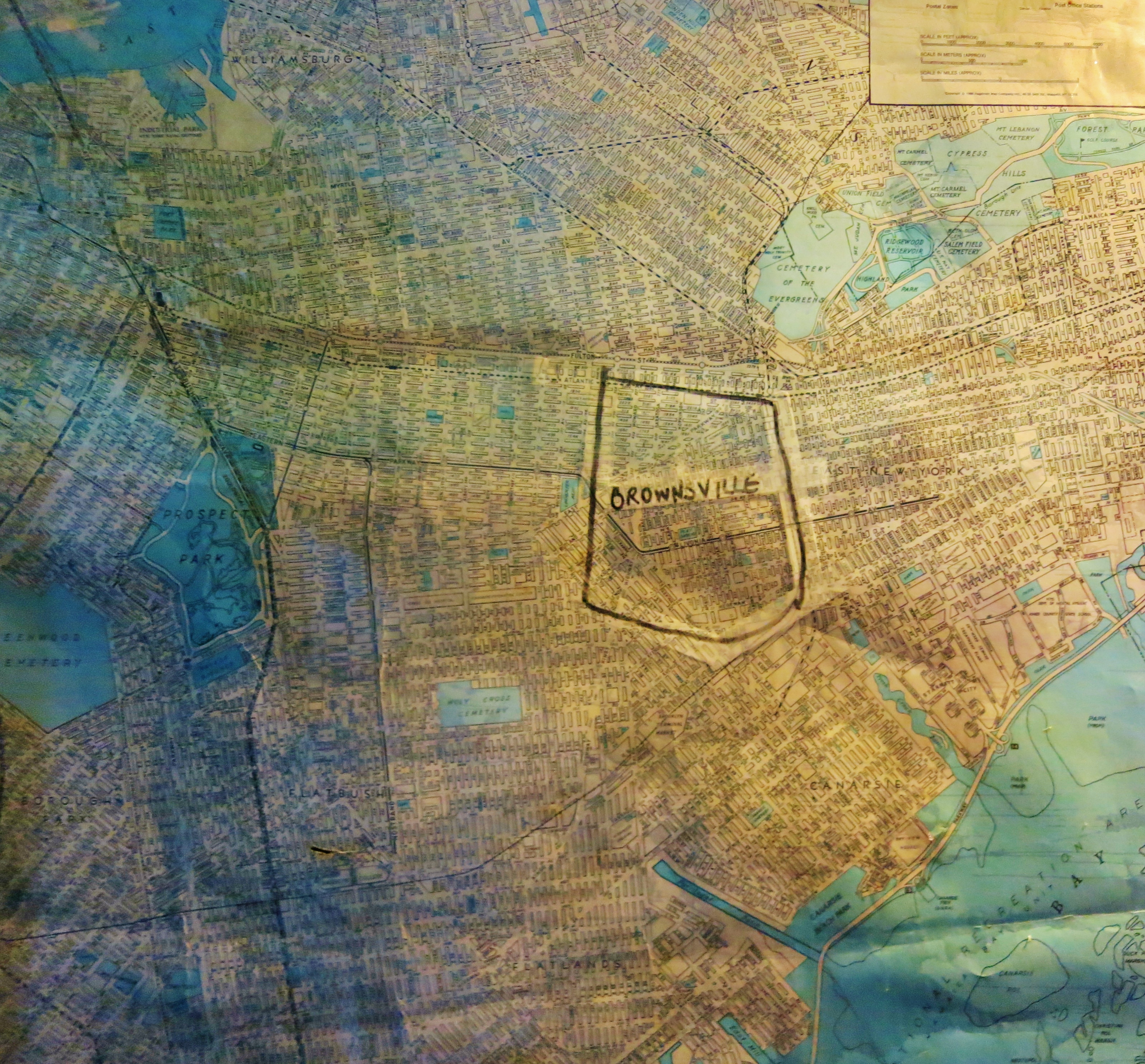 A map in the multi-use facility’s lobby outlined the border of Brownsville
A map in the multi-use facility’s lobby outlined the border of Brownsville
[Photos: Hannah Frishberg]
Related Stories
De Blasio Promotes East New York Rezoning Plan to Skeptical Locals
Gentrification Rally Disrupts City Hall Meeting
De Blasio’s East New York Rezoning Plans Not Affordable Enough, Group Says in New Report




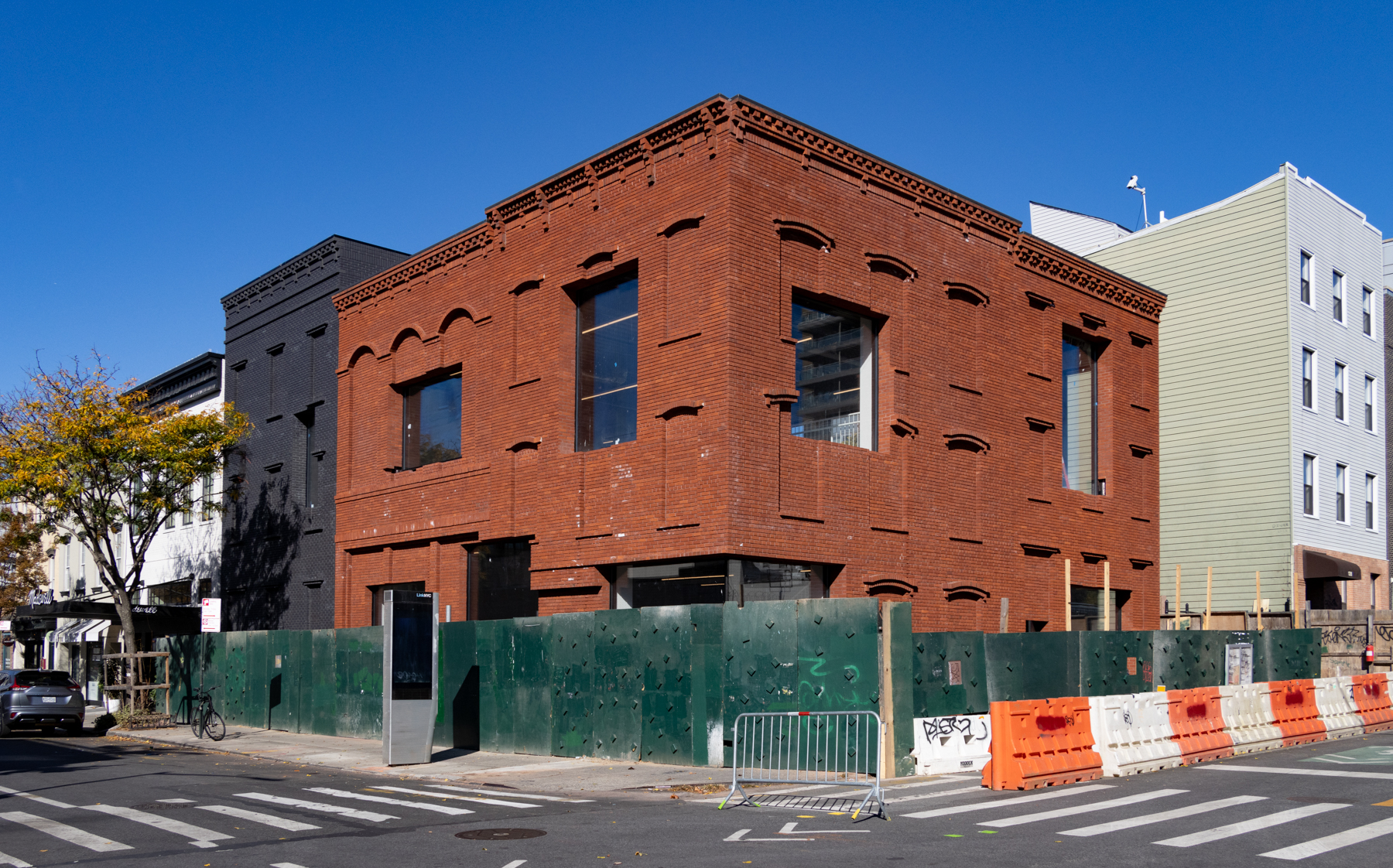




People are focusing on the rezoning not realizing that the first phase of change will happen on the residential blocks that this rezoning will not affect. What incentive can the administration offer to homeowners and landlords in order for them to not follow the market and raise rents or sell off properties, especially when in neighboring Bushwick and Bed-Stuy we see big $$? The hypothetical buildings won’t complete until years from now and it seems by then many residents will have been priced out and replaced by those priced out of other neighborhoods. Home prices in ENY are already out of reach for most in the area. They may be able to slow it down by educating tenants on their rights but unless something else is put in place this rezoning will be more of a phase two or three of the gentrification of ENY.
People are focusing on the rezoning not realizing that the first phase of change will happen on the residential blocks that this rezoning will not affect. What incentive can the administration offer to homeowners and landlords in order for them to not follow the market and raise rents or sell off properties, especially when in neighboring Bushwick and Bed-Stuy we see big $$? The hypothetical buildings won’t complete until years from now and it seems by then many residents will have been priced out and replaced by those priced out of other neighborhoods. Home prices in ENY are already out of reach for most in the area. They may be able to slow it down by educating tenants on their rights but unless something else is put in place this rezoning will be more of a phase two or three of the gentrification of ENY.
Their website does a good job explaining the situation.
Their website does a good job explaining the situation.